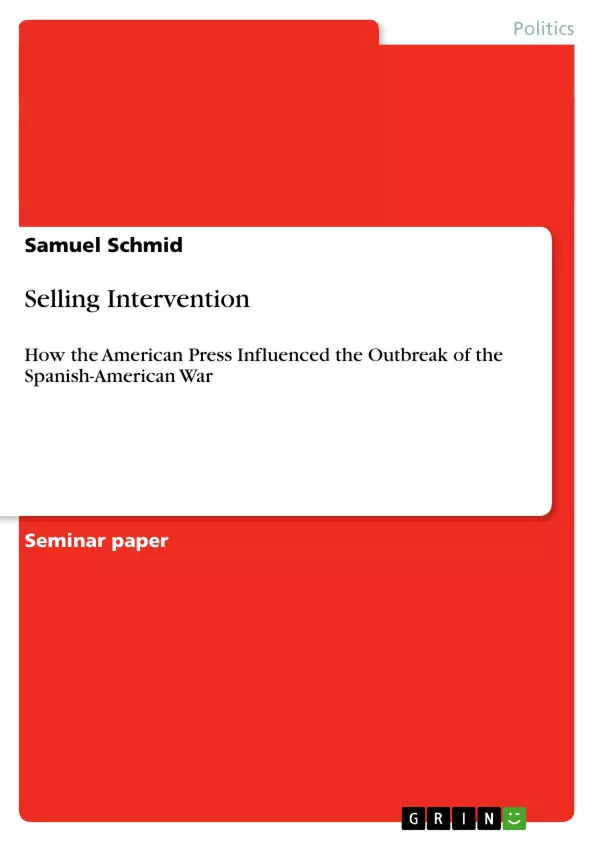This research paper deals with the question of how and in what ways the American yellow press – the New York Journal in particular – and its manipulated news of the humanitarian crisis in Cuba under Spanish colonial rule and the subsequent public
pressure influenced the American government in the decision to intervene in 1898 (The Spanish-American War). It is argued that it was a media-driven humanitarian intervention with numerous connectors from media to politics. To evaluate this, the explanatory links and the causal mechanism/process are made clear by connecting empirical media data to modern theoretical concepts of media and politics, such as framing and agenda-setting. The findings reveal that there were several kinds of interactions
between the New York Journal to the political sphere, making this case of intervention an excellent example of how (in this case, biased) information may trigger a variation in policy outcomes concerning humanitarian interventions.
Inhaltsverzeichnis (Table of Contents)
- Introduction
- Media and Politics: Theoretical Linkages
- General Propositions
- Construction of Reality
- Information and Bias
- Frames and Attributes
- Narratives and Symbols
- Public Opinion
- Problem Recognition and Agenda-Setting
- Political Entrepreneurs
- Decision and Behavior
- Synthesis and Specification
- Research Design
- Case-Study Design and Case Selection
- Research Question, Variables and Hypotheses
- Operationalization and Method
- “The Newspaper War?” – An Empirical Analysis
- William Randolph Hearst and the New York Journal
- The Humanitarian Crisis on Cuba: Major Events and Press Coverage
- The Weyler Case
- The Cisneros Case
- The de Lôme Letter
- The Maine Incident
- Senator Proctor
- President McKinley and Congress
- The War Outbreak
Zielsetzung und Themenschwerpunkte (Objectives and Key Themes)
This paper analyzes the relationship between media and politics in the context of humanitarian intervention. The author uses the example of the Spanish-American War to illustrate how the American press, particularly the yellow press, influenced the political decision-making process leading to the war. The main objective is to explore the causal mechanisms by which media can impact political decisions to intervene in a humanitarian crisis.- The role of the media in constructing political reality and influencing public opinion.
- The impact of framing and narrative techniques on public perception and political action.
- The influence of public pressure on political elites and their decision-making processes.
- The importance of agenda-setting and problem recognition in shaping policy outcomes.
- The potential consequences of biased and sensationalized media coverage in influencing political decisions.
Zusammenfassung der Kapitel (Chapter Summaries)
The introduction provides an overview of the paper's objectives and the historical context of the Spanish-American War. Chapter 2 presents a theoretical framework outlining the relationship between media and politics, covering concepts such as framing, agenda-setting, and public opinion. Chapter 3 details the research design, including the case selection, variables, and hypotheses. Chapter 4 focuses on an empirical analysis of the role of the American yellow press, particularly the New York Journal, in shaping public opinion and influencing the decision to intervene in Cuba. The chapter explores various events, such as the Weyler Case, the Cisneros Case, the de Lôme Letter, and the Maine Incident, and analyzes how they were covered by the press and their impact on public and political spheres.Schlüsselwörter (Keywords)
The main keywords and focus topics of the paper are: humanitarian intervention, media and politics, yellow journalism, Spanish-American War, public opinion, agenda-setting, framing, narrative, and political decision-making. The paper explores the influence of biased and sensationalized media coverage on political decisions, particularly in the context of humanitarian crises.- Quote paper
- Samuel Schmid (Author), 2010, Selling Intervention, Munich, GRIN Verlag, https://www.grin.com/document/147541



